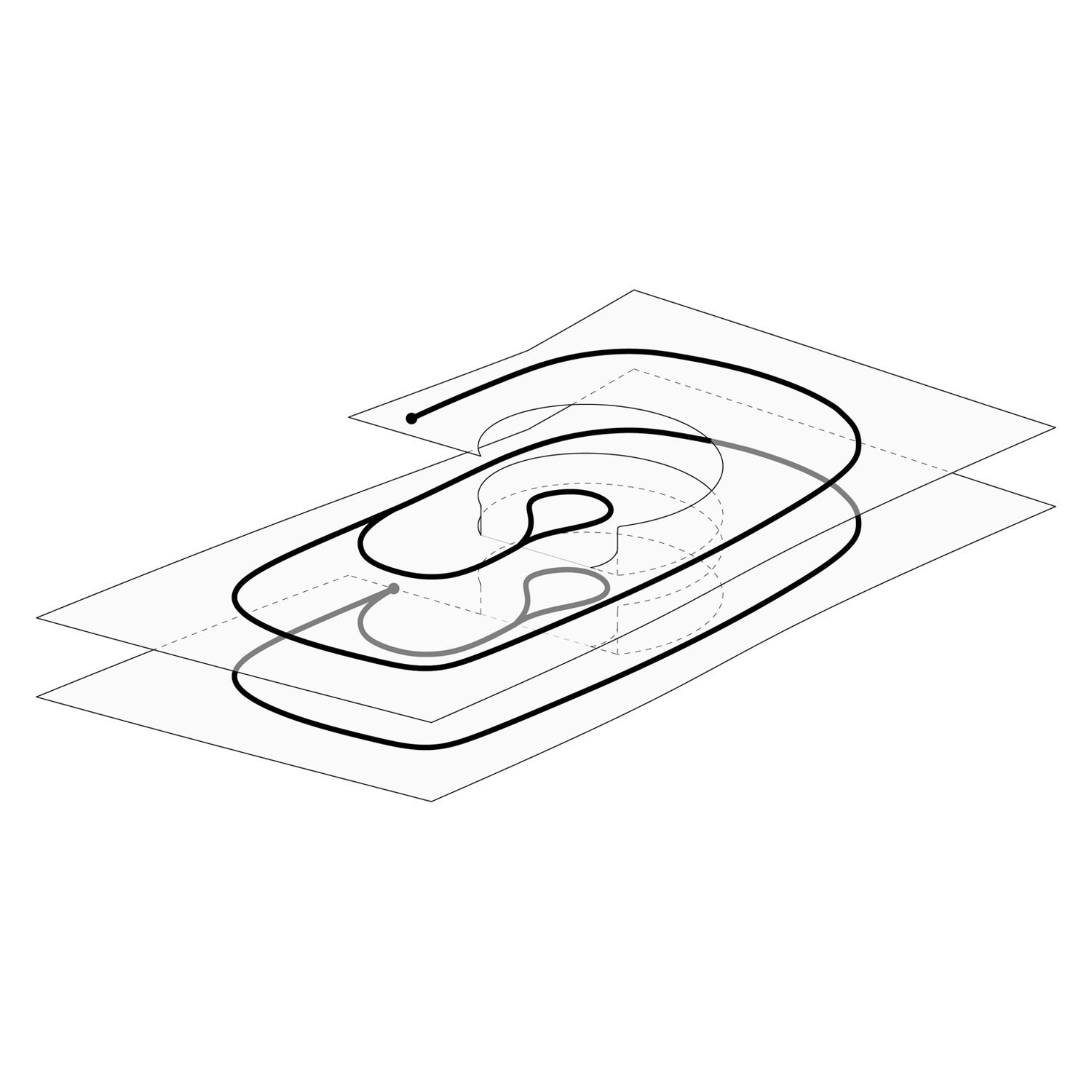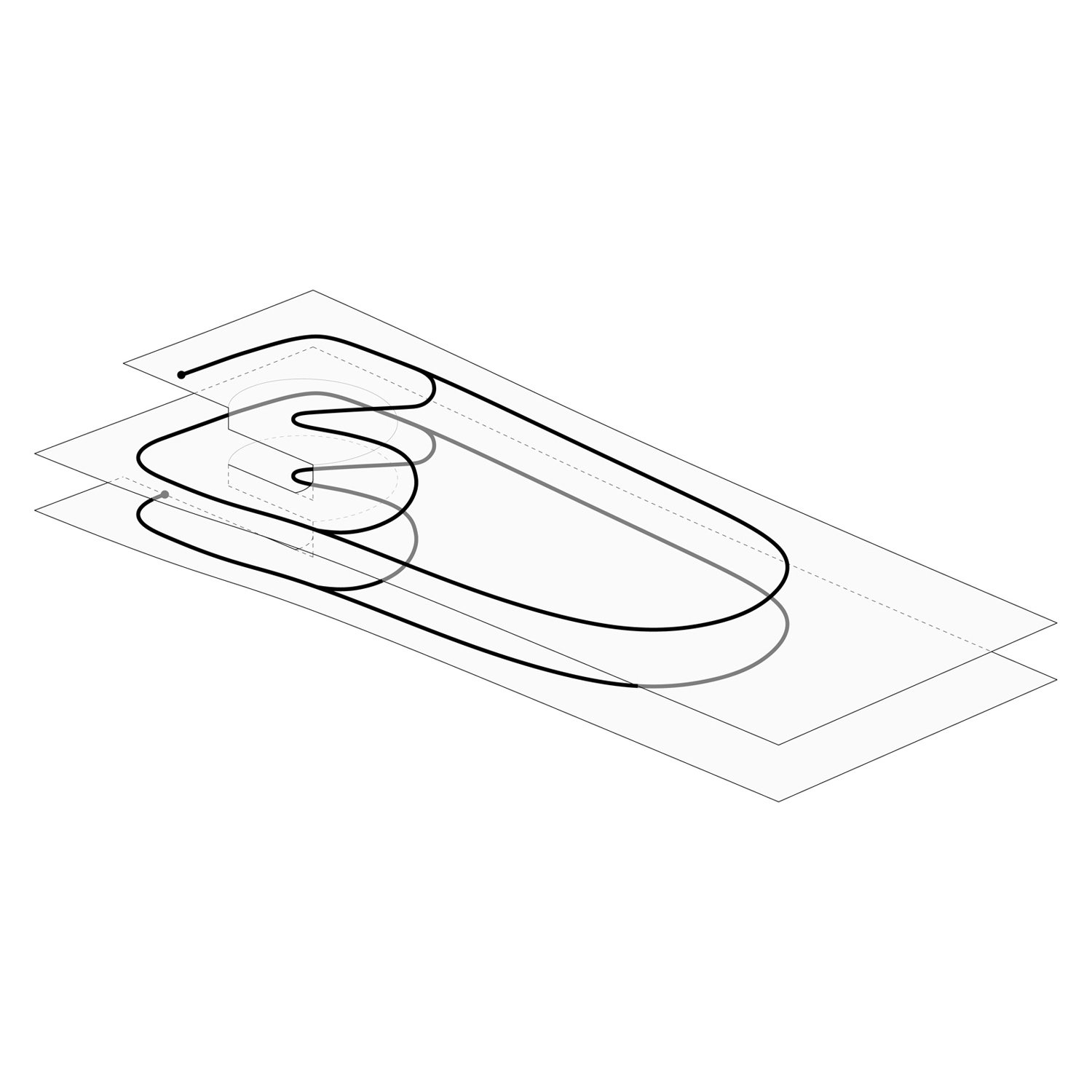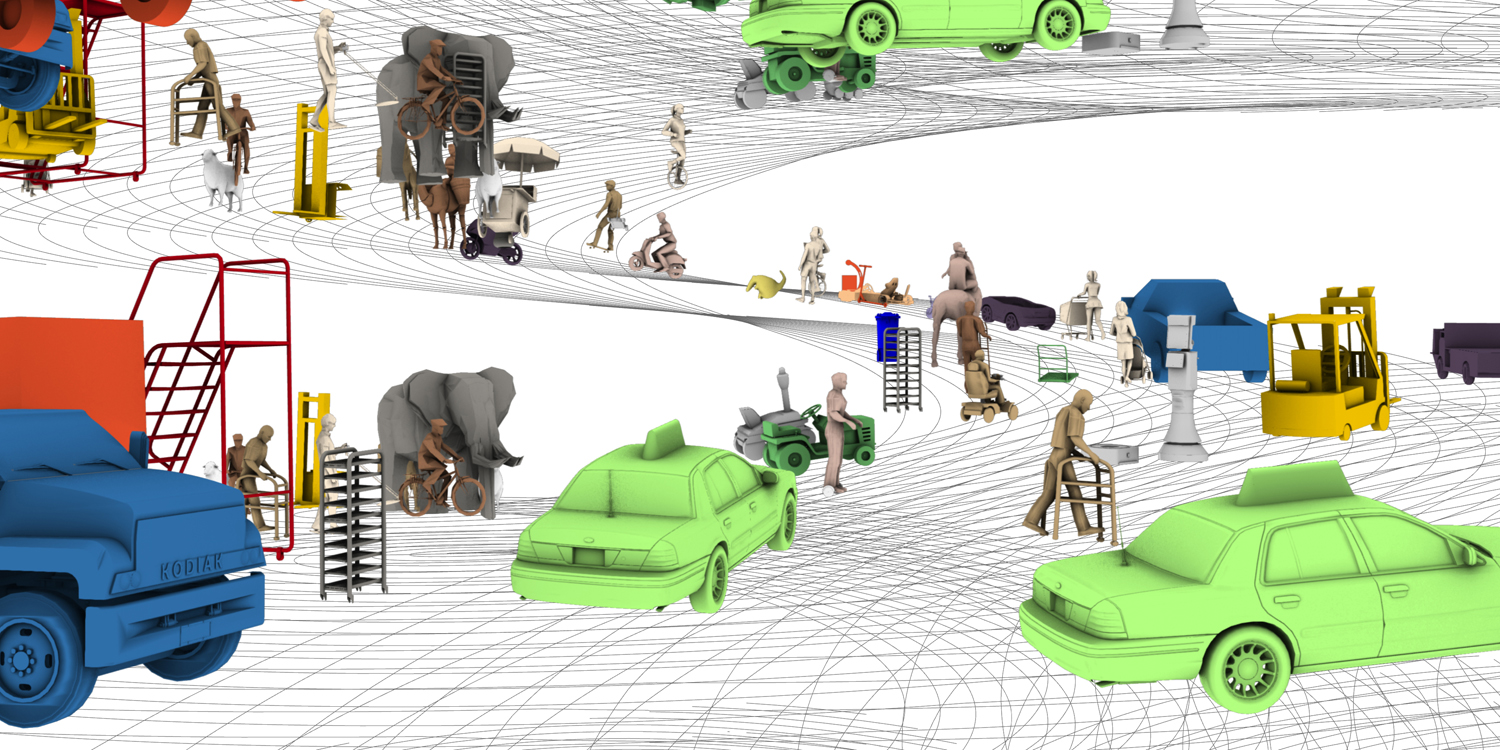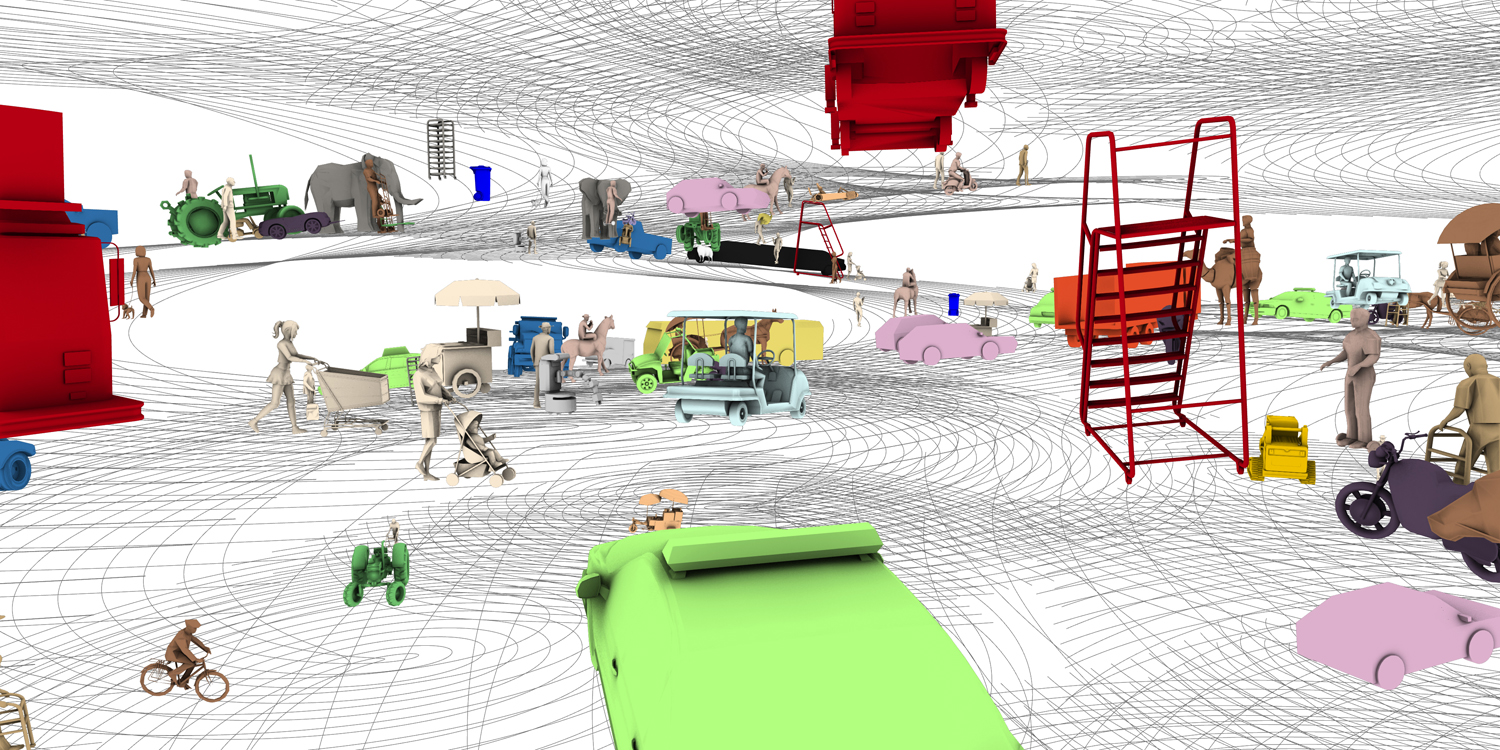Office of Diversity
As attested by philosopher Byung-Chul Han in his book The Burnout Society, “twenty-first century society is no longer a disciplinary society, but rather an achievement society.” The main characteristic of this kind of society is extreme positivity expressed through overproduction and hyperactivity. A culture of positivity implies that the possibility to do something ends up deriving in the obligation to actually do it. The subjects of an achievement society do not distinguish between labor and leisure: it is all work, no matter what they do. Auto-exploitation is the defining quality of contemporary society.
The new office type here proposed is designed for any and every type of conceivable worker: humans (with or without the need of mobility devices), animals (exploited or domesticated), and machines (operated or autonomous). This Office of Diversity is an apparently post- political space where workers, as “entrepreneurs of themselves,” auto-exploit themselves through the fluidly interchangeable conditions of labor and leisure, freedom and domination. The lack of distinction between labor and leisure results in a messy environment that resembles a circus or a modern-day Noah’s Ark.
This new office type can be understood as the rewriting of Rem Koolhaas’ “Typical Plan,” a text on the all-American invention of the Modern office building.
Using the helicoid as its only geometric definition, the Office of Diversity is designed by intersecting two helicoids and results in a continuous unobstructed ramp accessible to all types of workers.
Despite its systematic geometric definition, the spaces of this new office type are disorienting and misleading: the original linearity of the helicoidal circulation gets muddled when two helicoids intersect, and the universal accessibility typically offered by the helicoid results in a labyrinthic structure. The Office of Diversity seems to be an enabling structure open to everyone but in reality it is a stalemating structure that leads to nowhere.
Due to the current compulsion of auto-exploitation, achievement-subjects tend to see themselves as unique individuals to be singled out from the crowd. For this reason, in an achievement society everyone is suffering from a ‘Where’s Wally’ complex. Consequentially, this new type of office building is designed neither for the individual nor for the masses.
The Office of Diversity is a building type exclusively designed for Wally, a simple world-and-time-traveller aficionado who has now achieved mythical status. We are always searching for him but we never find him...
Project Data
Speculative project
2018
Designers
Sergio Lopez-Pineiro
Kenneth Hasegawa
Martin Fernandez
Tammy Teng
Wesley Lam (Original research)









































